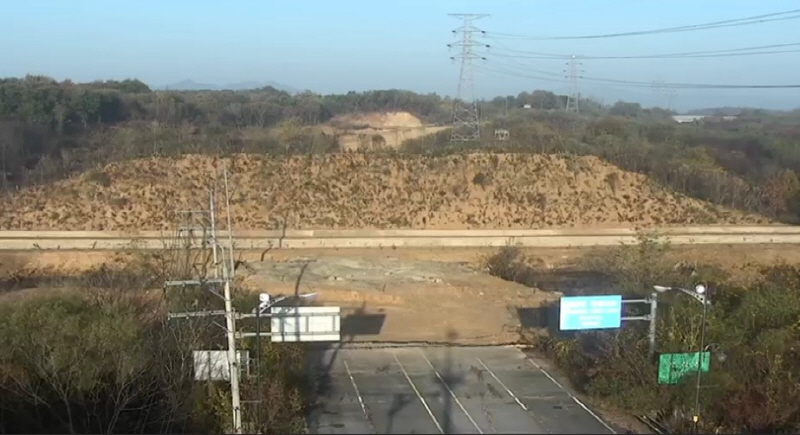North Korea has built anti-tank obstacles over now-destroyed roads that ran along two rail lines that connected the Koreas, according to the South’s Joint Chiefs of Staff (JCS) on Monday.
The JCS said the North had dug concrete-lined trenches inside the demilitarized zone where roads once existed alongside the Gyeongui Line that connected the North Korean city of Kaesong to the South Korean city of Paju in Gyeonggi, as well as the Donghae Line that connected the two Koreas’ eastern coasts.
To the north of the trenches, the regime also built piles of rammed earth almost 11 meters (36 feet) in height.

According to the JCS, Pyongyang deployed between 300 and 400 workers to construct the rudimentary fortifications from Oct. 15, when it blew up the two inter-Korean connections, to Nov. 1.
South Korean military authorities estimate that the trenches that now run laterally across the sites of the destroyed roads are 10 meters in width and 160 meters in length, while the fortifications are approximately 50 meters in width and 120 meters in length.
According to the JCS, the trench blocking overland access on the Donghae Line is approximately five meters deep, while the one on the Gyeongui Line is only three meters deep.
The JCS added that North Korean workers were observed planting trees on the rammed earth barriers. They also temporarily installed the regime’s flags on top of the barriers to take photos.
South Korean military officials believe the North could easily push the piled earth into the trenches should it decide to embark on an invasion of the South.
A JCS official told reporters that the barriers erected by the North “would not serve as impediments to war” and have “little value from a military perspective.”
“We believe that these projects are intended as part of a propaganda demonstration to demarcate [the regime’s] territory,” he added.
BY MICHAEL LEE [lee.junhyuk@joongang.co.kr]




